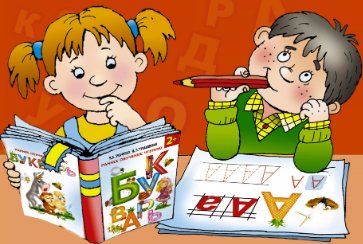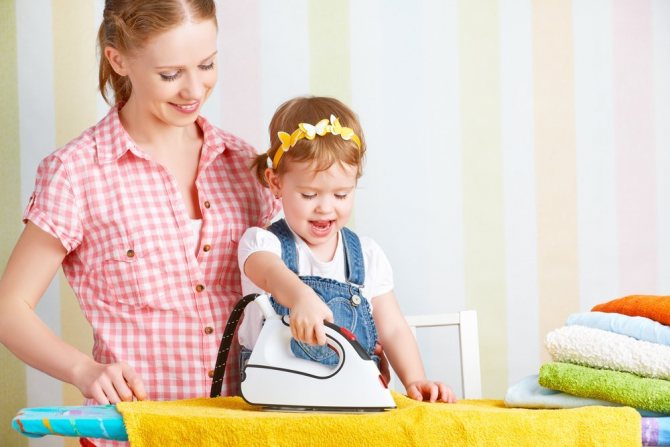How to determine if a child is ready to learn to read
How do you know if your child is ready to learn to read? Any observant parent can do this, and you also need to take into account the psychological, physiological and individual characteristics of each baby.
I will give you some signs from my personal life. Teaching reading to my two daughters followed completely different scenarios and time frames. The eldest child began to be interested in letters at the age of 1.5 years. You show the letter and she instantly remembers it and reproduces it in other situations (showed this letter in a book, on food packages on clothes, etc.). By the age of two, she knew all the letters without making complex sentences. At three years old, the child was already reading syllables, and by four years old, words and short sentences. At the age of five, this was already conscious fluent reading. There was no effort at all in learning, it was the interest and desire of the child himself. This indicates emotional and psychological readiness for learning.
With the youngest child everything was different. There was no interest in letters and reading until the age of 4, and maybe later. Further, in game techniques for teaching reading, it was discovered that phonemic hearing was impaired. The child confused words that sounded similar (bear - bowl, tom - house, etc.). In addition, the pronunciation of several sounds was impaired. This example shows that a 4-year-old child was not yet physiologically and psychologically ready for learning.
Readiness criteria for learning to read
- A very important indicator of readiness for learning to read is the child’s developed coherent speech. He speaks in complete sentences, can make up a story, retell what you have read, then start practicing with confidence.
- The second important indicator is correct speech and the development of phonemic hearing (distinguishing between similar-sounding words house - com ). You can find out whether your baby’s speech is developing correctly by following the highlighted link. When should you seek help from a speech pathologist (speech pathologist).
- If a child speaks little or pronounces sounds incorrectly, seek help from a speech pathologist (speech pathologist); if you are already visiting one, then follow and carry out all his instructions.
- The baby is quite capable of concentrating his attention for 10-15 minutes, otherwise there is no point in even starting to teach reading.
- Your child constantly asks to read or spends hours looking at books, loves to listen to fairy tales and asks questions about their content.
- Distinguishes between right and left, up and down. If the child does not know how to do this, teach him. This will help him navigate the page or text: which side to start reading from, where is the top and bottom.
Teach children to tolerate disappointment and confusion

Mariana Abdullah, director of the parenting program at the University of California Science Center, shares: “Being able to handle disappointment is a skill that children can learn. When children encounter an obstacle (for example, the piano pieces they are learning become more difficult), it means that they may feel a little confused about what to do next.
The company built the Drunken Crab cafe for a man and posted the photo on Facebook
I don’t throw away shampoo cans, but make stylish accessories: instructions
An interesting cake similar to fast food from KFC was made by a chef from Britain
As a parent, you should do everything you can to encourage your children to not give up. Let them understand that they need to move on! Tell your child about many times when you personally failed or were confused. Share stories of how patience and hard work pay off. Involve siblings, grandparents, and friends. Let them strengthen the child’s confidence that the efforts made will certainly pay off.”
When should you start teaching your child to read?
Many parents are worried that their child will not learn to read before school and begin to do this almost from the age of 2. But as I described in my own example, this is all very individual. There is no need to rush - watch the baby.
- At 3-4 years old, most often the baby is not yet ready to learn to read. It is difficult for him to sit in one place for a long time and maintain attention. Therefore, at this time, it is better to enrich his knowledge about the environment, replenish his vocabulary and develop his speech.
- Consider your child's individual characteristics. Don't look up to other children.
- The best time to learn to read is 5 - 6 years old. If your child does not attend preschool or various developmental courses, start doing this yourself. Below we will tell you how.

Risk zone for children and teachers: should a first-grader be able to read and write by September 1?

Schools declare that there is no need to prepare for the first grade, and all sorts of courses are just adaptation. In fact, teachers are happy if children already know how to read and write by the time they reach first grade. But is this really necessary? Our blogger, candidate of pedagogical sciences, associate professor Elena Agapova argues.
First grade. Newsletter
Valuable advice and invaluable support for parents of first-graders
Communication with parents of first-graders from different parts of our country revealed a problem that is becoming more acute every year. It turns out that modern school welcomes not only reading skills, preferably fluent and conscious, but also writing skills.
What happens: in the kindergarten program there are no such requirements for graduates, but in the school there are? Or rather, the school does not require it (since it is illegal), but wants it. Any teacher will explain that it will be easier for the child if the reading skill is developed. And this is understandable. And if he knows the entire elementary school curriculum, it will be even easier for everyone - children, parents, and teachers.
But is it necessary to do this, and if so, how? Force? Force?
Take you to school in the evenings and Saturdays for preparation? Teach yourself? It is clear that children graduating from school are the target audience of additional paid education organizations, but this does not solve the problem. After such preparation, many children not only permanently lose their motivation for learning in general, and for reading in particular, but also continue to experience serious psychological problems, almost throughout the entire period of initial training, and even beyond, associated with the situation of unsuccessful “entry” into the learning process. ⠀
Where to start teaching your child to read
- Always start with the simplest thing: gradually learn letters and sounds in everyday life, not in school. We went for a walk: draw letters and syllables with a stick in the sand, fold them out of pebbles, mold them in the sandbox, find letters on clothes, on signs, on food and toy packaging, etc. Explain that letters and sounds surround us everywhere. Tell the difference between a letter and a sound: we write and read letters, but we pronounce and hear sounds.
- When learning to read, a sense of rhythm is very important. The sense of rhythm is well developed by dancing, singing, and outdoor games (games with a skipping rope, ball, etc.). So feel free to turn on fun music and dance. This will not only sharpen the baby’s rhythm, but also lift his spirits.
- Next, you can begin more organized training; you need to gradually teach perseverance and the ability to clean up after yourself. Organize a comfortable table and chair for your child, and a shelf for his accessories (book, notebook, pen, pencil). At first, 10-15 minutes will be enough for training.
- Set a good example for your child, because it is from you that he absorbs the love or dislike of reading. Read more yourself, your child will definitely notice. In addition, discuss with your child what you read, ask him questions about what you read. Young children can be asked questions based on the pictures (Who is drawn? What is he doing?), older children can be asked questions based on the plot. Stimulate them to think (Why did he do that? What would you have done in his place?).
- It is better to teach reading with simple syllables and words and take into account whether the child pronounces sounds in syllables correctly (for example, if the baby does not say the sound “S” or “L”, then you should not teach reading with these sounds, otherwise the incorrect pronunciation will only become stronger). Therefore, it is better to start with words such as: ma - ma, pa - pa, etc.
- Use gaming techniques when learning to read: you can draw vowel letters in red on cards and place them throughout the room, swapping them. Then do the same with the consonants, but color them blue. It is important! The child needs to distinguish between vowels and consonants, this will make the reading process easier.
- Buy an ABC book that is closest to you. N.S.’s primer is in good demand. Zhukova.
- With the help of a primer, the child will learn to first read syllables, and then words. It is very easy to understand, with clear instructions and tips.
- Conduct classes systematically and regularly. 5-10 minutes every day is better than 20 minutes once a week. This can be done at the table, or on the way home, on a walk, in the car, on the train, in a cafe (read signs, name letters, find objects similar to letters, etc.)
- The most important rule is to exercise only in a good mood! No tears or hysterics. It won't do any good. It’s better to postpone the lesson or make an agreement with your child. Now you are watching a cartoon, and then we will read.

How to teach a child to read while playing
- In order for your child to better remember the letters, make them yourself and better than using rough paper. This way, the child uses not only vision, but also tactile sensations. Moreover, when the child himself participates in the production, he understands the world better.
- Learn one letter in different ways: drawing in the sand, laying out cereals, pebbles, modeling from plasticine, drawing with your left and right hands...
- Give a special massage. Write a letter on the child’s back and he guesses. You can change places, because the baby is interested in giving tasks himself.
- Hang the letters and written words around the room and pronounce them. Letters and words should be bright and written in two colors (vowels in red, consonants in blue). This is necessary to make it easier for the child to learn the rules of grammar.
- For this game you will need a magnetic board with letters, or a refrigerator with magnetic letters. Place several consonant letters vertically, those sounds that the child pronounces well. Place one consonant next to it. This is an elevator where the vowel letter rises and falls. At the same time, we read the syllables (first the adult, and then the child). For example, MA - PA - TA - NA. Then you can replace the letters in the elevator and put vowels, and the consonant will rise and fall.
- When the child masters reading straight syllables. you can go to the reverse. For example, an airplane is the letter A. The airplane lands at different airports and the syllables are formed: AN; AP; AM...So the baby will understand. what are back syllables and learn to read them. First, of course, the adult reads, and the child listens. Next, you need to introduce it to repetition.
- You should not play the same games every day; you need to alternate them so as not to lose interest.
- It should be read emotionally and not monotonously. Read as if in a chant, emphasizing the accents. First, the adult reads, and the child listens, then repeats.
- Make sure your child finds it interesting. If interest is lost, then you should stop so as not to discourage desire.
You will also be interested in the educational educational video Luntik learns letters . The video will help you quickly and easily learn letters and prepare your child for school.
Important detail

Many parents tend to use the same tools when raising their children. This is reward and punishment. Everything is clear about the reward. It really gives birth to a child’s desire to do something. Punishment is unlikely to motivate a child to make a thorough effort. When you give your kids extra chores, it feels more like coercion than motivation. According to psychologists, such an approach is unlikely to have a lasting positive impact.
Is there a more effective way to stimulate your children? Experts agree that there are many of them. In this article, you will learn how to motivate your children without feeling sad and disappointed.
A lawn with dormouse looks unsightly. But I learned to remove them without problems
Want to get an owl like Harry Potter? Prepare plenty of space and plenty of meat
If someone becomes immortal, what can happen to them within 700 years?
Rules for learning to read
To make the process of learning to read easy and enjoyable, follow these rules:
- When learning the alphabet, name the letters correctly . Letters in preschool age are pronounced in the same way as sounds. Call the letter M as the sound “M”, not EM, the letter K is pronounced like “K”, not KA. This rule is very important and it is a grave mistake if parents do not follow it. Teaching a child to read if you have memorized the letters incorrectly will be very difficult and will take a long time to correct this error.
- Start teaching your child to read only if he is ready for it. This is around the age of 5. One can start teaching earlier, but only if he has a predisposition for this (see readiness criteria).
- Do not force your child to read, do not put pressure on him. If he categorically does not want to, give him time, and then slowly and gradually return to training in the form of game techniques.
- Choose a method that is suitable for the child’s age. If you decide to start learning at an early age, then this is the whole word method. If you decide to wait until 5-6 years, then the Zhukova and Zaitsev method is better suited.
- If your child has shown interest in reading and has learned to read syllables, do not rush him to read sentences and texts. Ask questions about the words you read. Necessary. so that the child understands what he reads.
- It is important to praise your child for the slightest successes. He should feel that they are proud of him. So he will try even harder. You can come up with a reward system: collect coins, pebbles into a piggy bank, or collect stickers and chips.
- Learning to read is a long process, so be patient. Be friendly and don't yell at your child. If you feel that you are starting to get angry, it is better to leave the room, breathe, drink some water and better postpone the activity.
- Keep track of class times. At the slightest fatigue, switch him to another type of activity or offer a game. For children 5-6 years old, the lesson lasts no more than 25 minutes. For children 3-4 years old, no more than 15 minutes. Even if the child really likes it, it is advisable to conduct physical exercises or kinesiological exercises. But this does not apply to playful ways of teaching reading. There is no need to set time limits here.

Watch your tone of voice

“Supernanny” of 30 years, Connie Simpson, who has helped raise more than 250 children, shares: “Would you like to know what children think about what you do? Just switch roles. Do one of their daily activities and give them the opportunity to correct you the way you usually correct them.”
We decided to go to Khosta instead of Turkey this year - Sochi is opening on June 21
Cherries are ripe in the gardens - you can make a wonderful drink from them: recipe
New drug development strategies rely on phase separation
What can be concluded? Yelling or harsh criticism not only creates a negative impact on children's psyche (studies show that such parental behavior increases the likelihood of depression), but it is also an ineffective way of motivation.
Alan Kazdin, a professor of psychology and child psychiatry at Yale University, says, “If your goal is to change something in your child or develop a positive habit, yelling is the worst way to do it.” Instead, Alan proposes a system in which you set your child up for success by being clear and upfront about what you want him to do.

The professor summarizes: “The consequences of your words or actions should only be positive. If your child struggles to hang up his jacket, praise him using hugs and kisses (physical actions emphasize praise, like an exclamation point in a sentence). As a result, the child’s undesirable behavior will melt away right before our eyes.”











